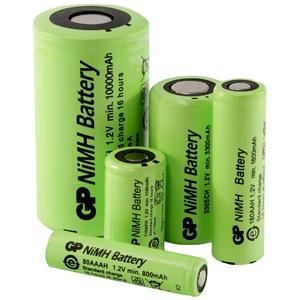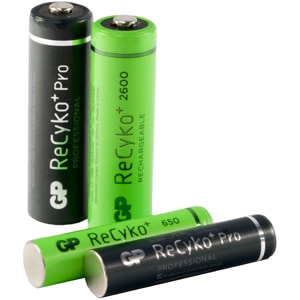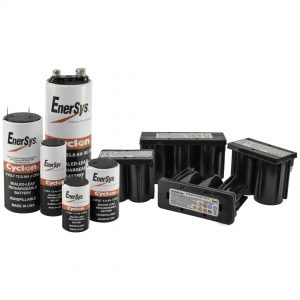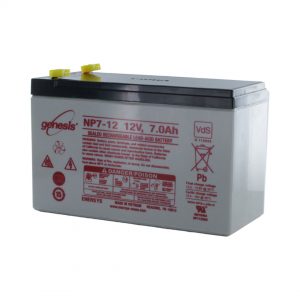Take the sleave off a battery and it probably looks just about the same as any other cell. However whats inside of that little metal canister can vary immensely: making certain batteries lighter, re-usable, higher capacity, more powerful or even improved temperature tolerance. The qualities may or may not be necessary for your application; but pick the right battery and you get the best out of your application.
First of all, the two major factors when looking at batteries is Voltage and Capacity. Voltage is the flow of electrical current, The greater the voltage, the greater the flow of electrical current. The Capacity of a battery is measured in Amps or Milliamps (mAh). The capacity of a battery is how much energy they hold.

 Alkaline batteries are what we probably think of when we think of a battery. They are what we use mainly in our homes: TV remotes, clocks and torches all use alkaline cells of varying sizes. They only have one life cycle and should be recycled in battery bins once this is complete. Due to the life cycle, Alkaline cells are the cheapest out of the chemistries, although they can still perform to high standards.
Alkaline batteries are what we probably think of when we think of a battery. They are what we use mainly in our homes: TV remotes, clocks and torches all use alkaline cells of varying sizes. They only have one life cycle and should be recycled in battery bins once this is complete. Due to the life cycle, Alkaline cells are the cheapest out of the chemistries, although they can still perform to high standards.
They have a voltage of 1.5V and a Capacity Range from 33 mAh to 15,000 mAh, depending on the size of the cell. Alkaline batteries don’t have as many logistic restrictions compared to other chemistries allowing for easier transportation. They can handle high discharge currents and are well suited to applications that require a constant or pulse discharge. They have an operating range of -20°C and +55°C


NiMH Batteries are rechargeable and don’t contain any heavy metals. Making them more environmentally friendly compared to other chemistries. They come with either a pipped top (consumer range) or as a flat top (industrial). The flat top allows tags to be fitted, which can then be soldered to directly. The flat top version has a bigger range of sizes, including 1/2 AA to 4/3 AA and sub C sizes. See our Battery chart for more information.
They have a Voltage of 1.2V and a Capacity range from 80mAh to 13,000mAh. They have 30-40% higher cpacity over NiCd cells allowing longer run-times or downsizing of the battery pack. With an operating range of -20°C and +55°C
 NiCd batteries were the main choice of rechargeable cell, however they are being over taken by NiMH. They are still mainly used where high temperatures are involved, applications such as emergency lighting. Power tools and two way radios also typically use NiCd cells. If price is concerned then they are typically cheaper to buy than NiMH cells and have a high discharge rate as well as long life. The one significant downside of the chemistry is that they contain toxic metals, making them less environmentally friendly.
NiCd batteries were the main choice of rechargeable cell, however they are being over taken by NiMH. They are still mainly used where high temperatures are involved, applications such as emergency lighting. Power tools and two way radios also typically use NiCd cells. If price is concerned then they are typically cheaper to buy than NiMH cells and have a high discharge rate as well as long life. The one significant downside of the chemistry is that they contain toxic metals, making them less environmentally friendly.
They have a Voltage of 1.2V and a capicty range from 700mAh to 7000mAh. With an operating range of -20°C and +55°C
Li-SOCl2 batteries are more powerful than alkaline cells. Like alkaline, they are disposable but they have an excellent shelf life of 10 years, compared to the 5 years of Alkaline cells. There has been cases where Li-SOCl2 batteries have lasted 15 years in operation. Each cell is fitted with a vent to prevent overheating, giving excellent reliability over extended operation life. Lithium batteries are also a lot lighter than most other chemistries.
They have a voltage of 3.6V and a capacity range of 1200mAh to 35000mAh. They also have an operating range between -60°C and +85°C

 SLA batteries are used mainly when weight is not a factor. They offer economical solutions when powering large applications such as: wheelchairs, hospital equipment and emergency lighting. Storing in a discharged state is not possible without it effecting the operation of the battery. However they are well suited in applications that continually run, such as UPS systems.
SLA batteries are used mainly when weight is not a factor. They offer economical solutions when powering large applications such as: wheelchairs, hospital equipment and emergency lighting. Storing in a discharged state is not possible without it effecting the operation of the battery. However they are well suited in applications that continually run, such as UPS systems.
Sealed lead acid batteries are available in 2V, 4V, 6V and 12V with capacities ranging from 800 mAh and 38,000 mAh They have a low self discharge rate meaning they are reliable over a long period of time.